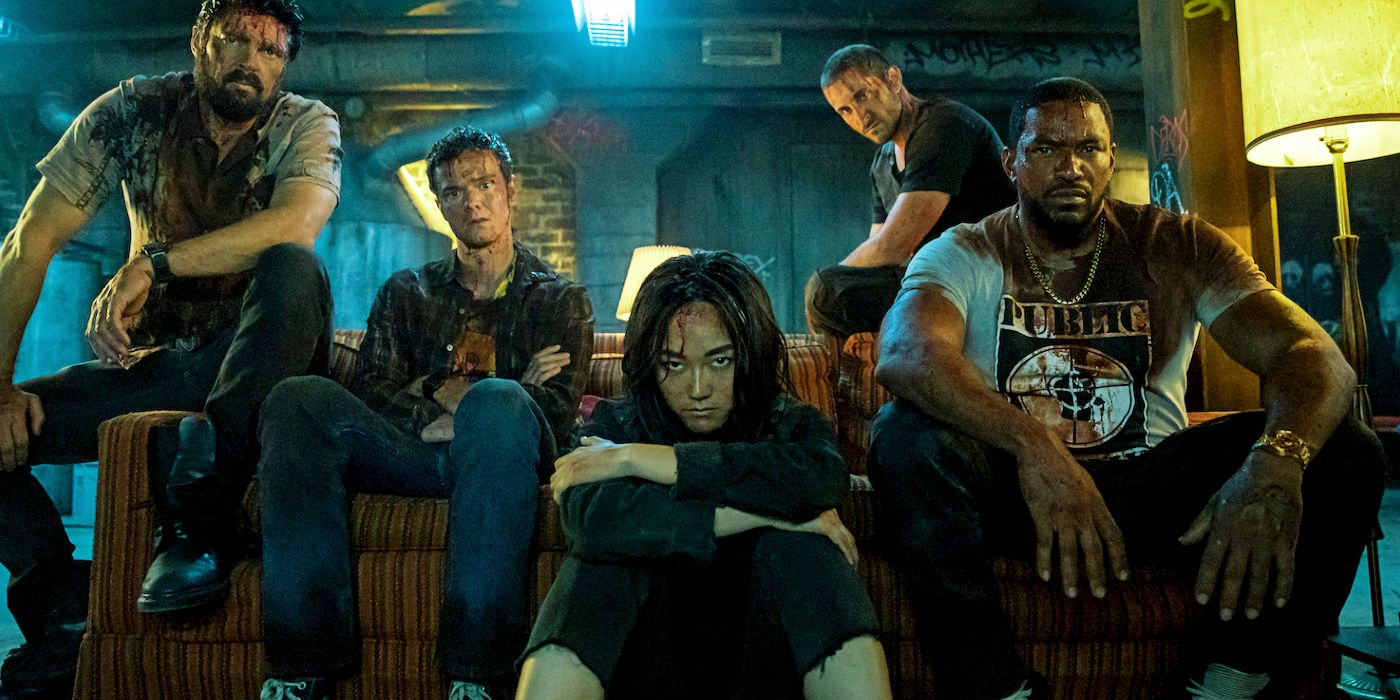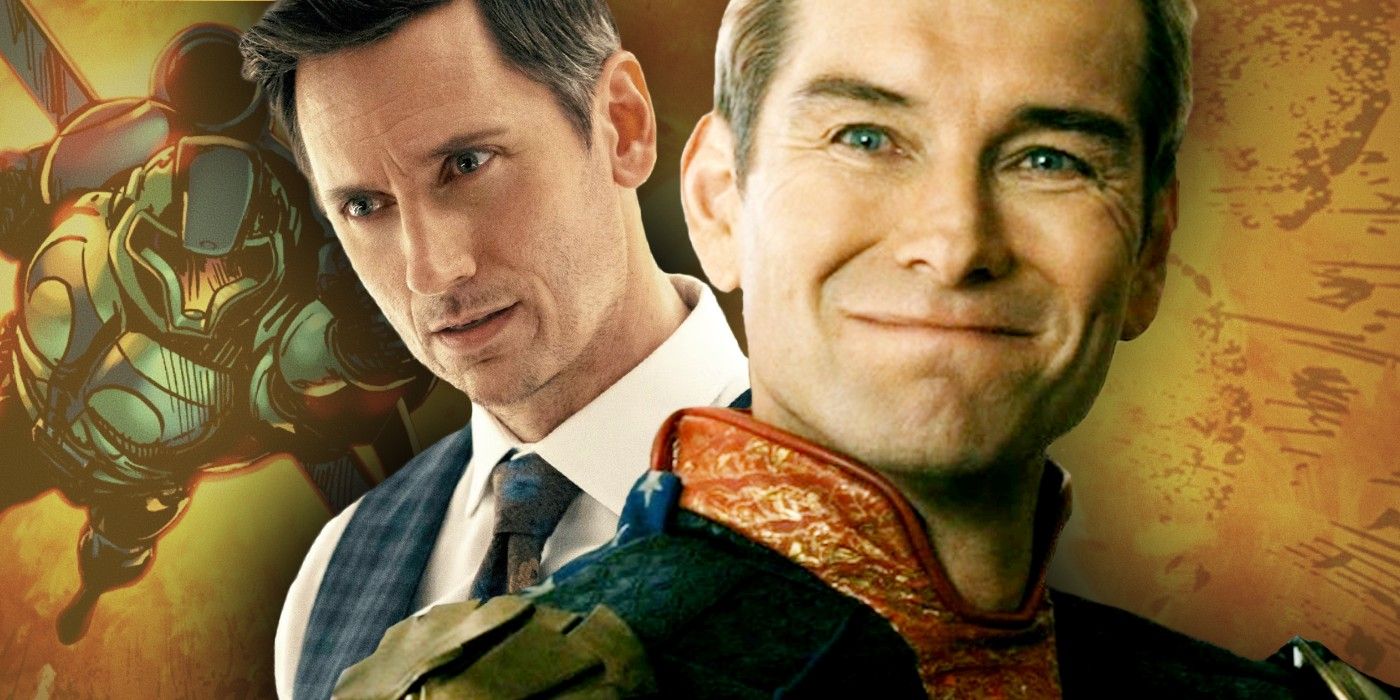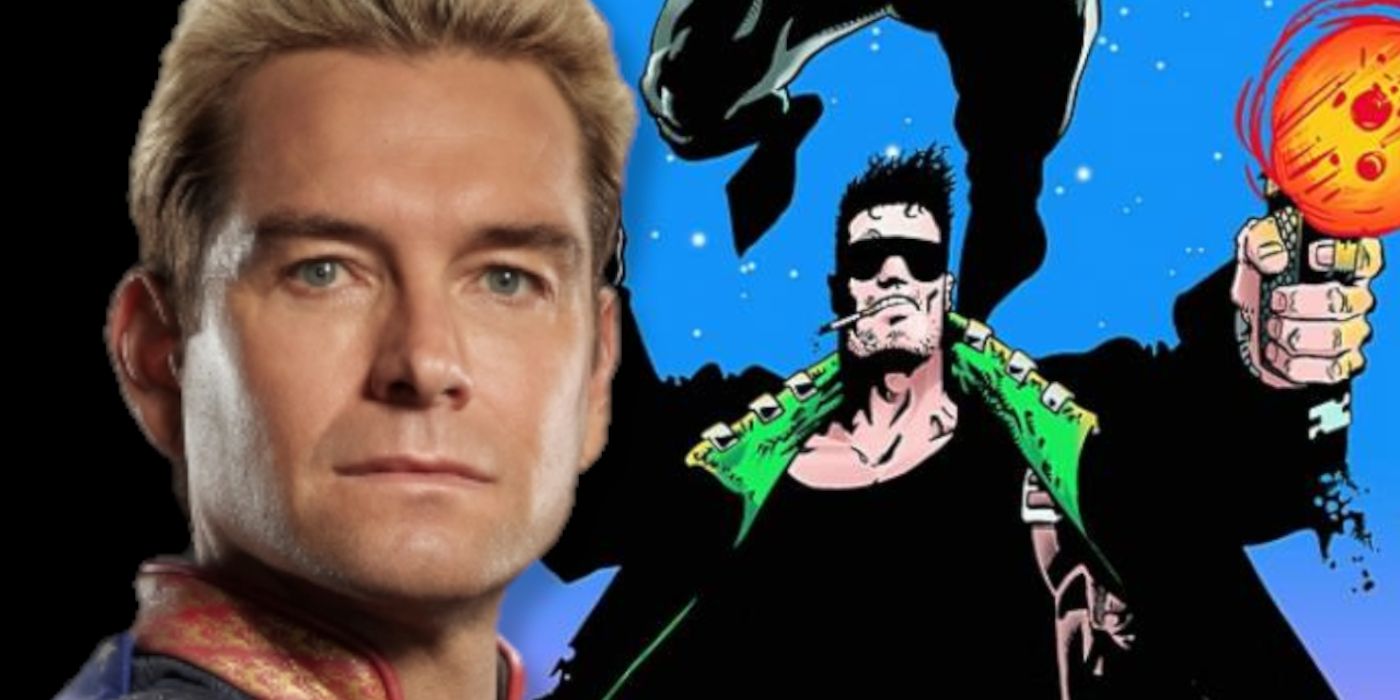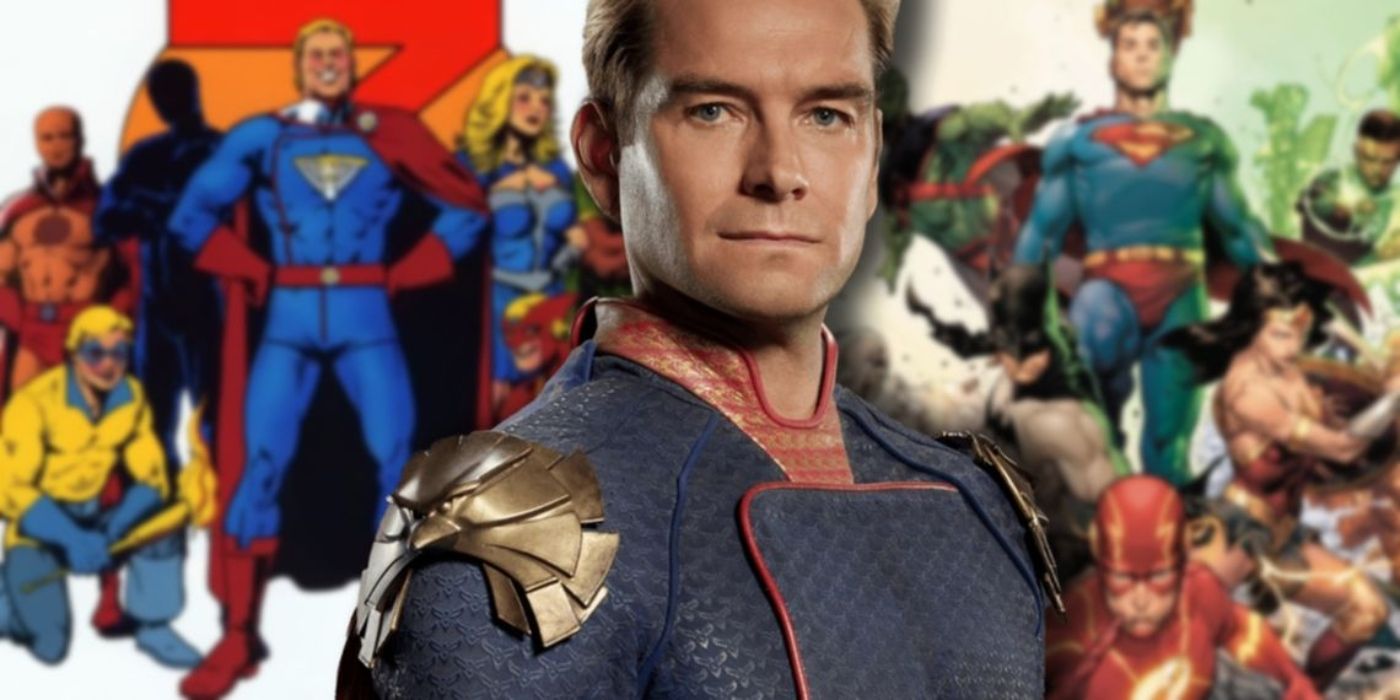Homelander may be The Boys‘ most terrifying powerhouse, but one narrowly avoided change would have made his place in the franchise impossible. That’s because when writer Garth Ennis was originally pitching the series, he intended Billy Butcher’s team to have a combined superpower that would leave any Supe at their mercy.
In The Boys Omnibus volume 4, the original comic’s creators discuss how they initially pitched the series to DC Comics (who published a few of the early issues before releasing the project, which was then picked up by Dynamite Entertainment.) While a lot of elements remain the same, one big difference is that the five members of the teams were initially planned to have a combined superpower which activated when they were all together. This ability would have allowed them to surround any Supe and drain them of their powers. Ennis’ original pitch reads:
Only when all five of the Boys are together can they employ their real power, however. A by-product of the serum, it allows them – by combined concentration – to switch off superpowers. The five simply surround the target, focus their thoughts, and he or she is instantly rendered no more powerful than an average human being. Magic rings don’t work. Speedsters can run no faster than you or I. And Gods are mere mortals.

In the end, this detail was dropped, and the Boys were given minor superstrength and durability to make them a physical match for the average Supe. However, if the Boys had been able to drain any Supes’ powers, it would have made Homelander’s place in the franchise pointless – his godlike abilities wouldn’t mean much if all the Boys needed to do was get the jump on him.
The Boys Could Originally Negate Superhuman Powers
The Power Needed All Five Members to Work
Ennis’ original pitch has some major surprises – for example, he conceived of Mother’s Milk as secretly being 200 years old – but a lot of the core characters and early plot events are recognizable. The team’s combined powers are the biggest change, with Ennis explaining that these abilities would come from a $14 million-a-shot serum, which ended up being Compound V. That change alone is smart, since it means the team get their powers the same way as all other Supes, while both versions explain why the Boys are such a small unit.
However, Ennis’ pitch also suggests that the serum power requires five users to work. This would explain why the Boys’ unit was structured as it is, and also tease a missing fifth member who preceded Hughie, setting up an ongoing mystery in the comic (this remains more or less intact, with Greg Mallory being the team’s original fifth member.) Of course, the major downside is that the story would have needed to contrive ways to split up the team every time a Supe target needed to be a real threat.

The Boys’ Tek Knight Originally Had the Franchise’s Most R-Rated Codename
Sharing his original pitch for the series, The Boys creator reveals that Tek Knight originally had an R-rated codename that ultimately went too far.
The Boys’ Garth Ennis Hates the Idea in Retrospect
Homelander Wouldn’t Work If The Boys Could Negate His Powers
While Ennis hates the idea in retrospect, there is a reason he initially wanted the ‘no powers’ power for Butcher’s team. Ennis explains that he wanted the comic to depict realistic and relatively horrific violence. One of the ways The Boys satirizes superhero stories is its attitude to the ‘consequence-free’ violence many traditional comics embrace in their depiction of crime-fighting vigilantes. The Boys critiques the power fantasy of superheroes by showing how dark their violence would be if the implied power balance was taken seriously. Annotating his initial pitch, Ennis writes:
What next, stand in a circle and shoot beams of love from their eyes? Jesus! The worst idea in history notwithstanding, what I realized early on was that action in The Boys shouldn’t involve “powers,” as such: it should be about the kind of violence that occurs outside bars at 2 am, where the victim is surrounded and overwhelmed by individuals intent on his destruction. In other words, totally unfair and highly effective.
Interestingly, one huge element of The Boys not in Ennis’ pitch is the Seven. None of the members existed yet, despite being running villains who appear from the very start of the series. It makes sense that Ennis would have the idea for the Boys’ powers before conceiving of the uber-powerful Seven, since as a concept it robs Homelander and his allies of what makes them most threatening. The idea of a team of black-ops specialists finding a way to beat superhumans would be far less ‘David and Goliath’ if each fight started with the Supes being robbed of their powers.
Since Homelander’s presence in the story hinges on his huge power imbalance with everyone else, he’d have effectively been ruined if the Boys could switch off his abilities whenever they wanted. However, the Boys’ initial powers make a lot more sense once you know that the series was originally going to be set in DC continuity.
The Boys Were Originally More Traditional Superheroes
Like Ennis’ Hitman, the Series Was Planned to Take Place in DC Continuity
Prior to The Boys, Ennis had written several series set within the continuity of DC comics, designing characters who would live in the same world as Batman and Superman. The 1996-2001 series Hitman (with John McCrea) is a perfect example, as down-to-earth hitman Tommy Monaghan uses powers gained during an alien attack to carry out gangland executions, often getting bound up in the adventures of DC’s big-name heroes. Hitman covers a lot of the same ground as the Boys (indeed, it even has its own Homelander), with Monaghan expressing disdain at the larger-than-life costumed set who don’t understand what it’s like to be a regular person – although he does have a soft spot for Superman after the two share a heart-to-heart.

If You Love Amazon’s The Boys, There’s a Comic You Need to Read… But It’s Not The Boys
Fans of Amazon’s streaming series The Boys who may find the original comics too extreme should check out this alternative Garth Ennis comic.
The Boys was originally supposed to work in the same way, with Ennis’ Omnibus notes revealing that DC asked him to make it possible for the series to cross over with its character – “a very bad idea that soon fell by the wayside.” However, it’s easy to see how the idea of the Boys as an anti-powers taskforce would work in a world so full of superhumans, especially before the later decision that all powers would derive from Compound V. This also suggests why Homelander was a later addition – an evil Superman stand-in is a lot more feasible in a world without the actual Superman.
Interestingly, the team’s initial designs were also influenced by their more traditional superhero flavor. Darick Robertson notes in the Omnibus that he initially saw them as being an official public-facing team in the superhero universe, including an early sketch of the Frenchman with an eagle-like logo on the back of his jacket – an attempt to give the Boys their own team logo, “a la the Challengers of the Unknown or Fantastic Four.” This concept was also quickly left behind, with the team becoming a CIA-affiliated group who operate in the shadows.
The Boys Was Almost Very Different
Would the Franchise Be So Big If The Boys Had Been a More Traditional Team?

At a time when the comics are not just a huge success but the basis for multiple big-budget Amazon adaptations, it’s hard to imagine a world where the Boys were a rough-and-tumble superteam whose big advantage was switching off others’ powers, and who would have run up against Batman and Superman whenever the series needed a boost. Homelander and the team’s black-ops mandate are seemingly baked into the franchise’s DNA, but it turns out that these were actually later additions, evolving around the core idea of five seriously dangerous people dealing realistic violence to badly behaved superheroes. Thankfully, these changes made The Boys even more distinctive, creating the right environment for Homelander to be a satisfyingly long-lived threat to the team.




